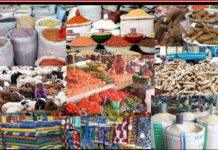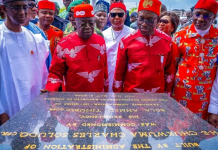

Africa stands at a pivotal moment in its industrial journey. With vast natural resources and a growing young workforce, the continent has the potential to become a manufacturing powerhouse. However, several challenges impede this progress. By optimizing manufacturing processes, Africa can significantly boost business prospects, create employment opportunities, and stimulate overall economic growth. This article explores the intricacies of automation, capital deepening, and the essential role of government. It also analyzes the advantages of transitioning from labor-intensive processes and reflects on the developmental trajectories of developed economies, engaging in the convergence versus divergence debate.
The Current State of Manufacturing in Africa
Manufacturing in Africa remains underdeveloped despite its potential. According to the World Bank, the manufacturing sector contributes a mere 10% to Sub-Saharan Africa’s GDP, compared to 16% in East Asia and the Pacific. This statistic highlights a substantial opportunity for growth and underscores the need for strategic interventions to unlock Africa’s manufacturing potential.
A McKinsey report titled “Lions on the Move II: Realizing the Potential of Africa’s Economies” projects that Africa could nearly double its manufacturing output to $930 billion by 2025 if it can overcome its constraints. This growth could potentially create up to 14 million stable jobs over the same period, highlighting the immense potential of the sector.
Strategies for Optimization
To optimize manufacturing in Africa, several strategies can be adopted:
1. Industrial Zones and Parks
Establishing industrial zones and parks with clear zoning regulations can centralize manufacturing activities, reduce costs, and improve efficiency. These zones can be equipped with necessary infrastructure such as power, water, and transportation networks. Ethiopia’s Hawassa Industrial Park serves as a successful model, providing a dedicated space for the textile industry, leading to job creation and increased exports. According to a 2020 Deloitte Report, industrial zones can boost manufacturing productivity by up to 20%.
2. Public-Private Partnerships (PPPs)
Engaging in PPPs can facilitate the development of manufacturing infrastructure. Private sector involvement can bring in expertise and investment, while the government can provide regulatory support and incentives. The success of Rwanda’s Kigali Special Economic Zone is attributed to effective PPPs that have attracted significant foreign investment. KPMG’s 2020 report on PPPs in Africa highlights that well-structured partnerships can leverage private capital and expertise, driving large-scale industrial projects.
3. Technology and Innovation
Leveraging technology and innovation can drive efficiency in manufacturing. Automation, AI, and IoT can streamline processes, reduce waste, and enhance productivity. South Africa’s adoption of smart manufacturing technologies in its automotive sector has improved production efficiency and global competitiveness. According to a report by PwC titled “Digital Factories 2020”, smart manufacturing could add up to $15 trillion to global GDP by 2030, with significant gains for early adopters in developing regions.
4. Skill Development
Investing in education and vocational training is vital to equip the workforce with the necessary skills for modern manufacturing. This can increase productivity and attract high-value manufacturing activities. Initiatives like the African Union’s Continental Education Strategy for Africa (CESA) 2016-2025 aim to enhance technical and vocational education and training across the continent. A World Economic Forum report indicates that upskilling could boost GDP growth rates by 2% in countries with high youth unemployment.
Automation and Capital Deepening
Introducing automation and capital deepening into African manufacturing processes is a game-changer. Automation involves using technology to perform tasks that traditionally require human labor, while capital deepening refers to increasing the amount of capital per worker, enhancing productivity.The introduction of automation and capital deepening can initially lead to concerns about job displacement. However, this transition can offer substantial long-term benefits, including:
- Job Transformation: Rather than eliminating jobs, automation transforms them. Workers can shift from repetitive, low-skill tasks to higher-skill roles in managing and maintaining automated systems. This shift requires targeted training programs to equip workers with the necessary skills.
- Increased Productivity: Automation and capital deepening increase productivity, making African manufacturing more competitive globally. Higher productivity can lead to increased output and lower costs, driving economic growth. McKinsey’s Global Institute report, “A Future that Works: Automation, Employment, and Productivity,” suggests that automation could raise global productivity growth by 0.8 to 1.4% annually.
- Economic Diversification: Higher productivity can spur economic diversification, reducing reliance on a single sector and enhancing economic stability. Diversification into high-tech and capital-intensive industries can create new job opportunities and foster innovation.
Government’s Role
Government can play a pivotal role in driving the optimization of manufacturing in Africa.Simplifying regulatory frameworks to facilitate easier land acquisition and investment and streamliningthe processes for property registration and construction permits can attract domestic and foreign investors.Equally,tax incentives and subsidies for companies investing in automation and advanced manufacturing technologies will spur innovation. These incentives can lower the barriers to adopting new technologies and encourage innovation. Deloitte’s report on African industrialization stresses the importance of fiscal incentives in attracting manufacturing investments. Government should invest in critical infrastructure such as power, transportation, and communication networks to support industrial growth. Reliable infrastructure is essential for efficient manufacturing operations and supply chain management. According to the African Development Bank, closing Africa’s infrastructure gap could increase GDP growth by up to 2%.Lastly, educational and trainingprograms should be developed to align with the needs of a modern manufacturing sector, focusing on STEM (Science, Technology, Engineering, and Mathematics) and vocational training. Partnerships between governments, educational institutions, and industry can create training programs tailored to the demands of the manufacturing sector.
Case Study of Nigeria
Nigeria, Africa’s largest economy and most populous nation, provides a compelling case study for the optimization of manufacturing. The Nigerian manufacturing sector has significant potential, but it faces several challenges. The biggest challenge is inconsistent and unreliable power supply which has created a significant bottleneck for manufacturers in Nigeria. The World Bank reports that Nigerian firms experience an average of 32 power outages per month, leading to substantial production losses.Poor transportation infrastructure also hinders the efficient movement of goods. Nigeria’s road network is often in disrepair, and the country has a limited railway system, which impacts supply chain efficiency.Complex and opaque regulatory environments deter investment; the recent revelation by the CEO of TotalEnergies, Patrick Pouyanne, paints a gloomy picture. Manufacturers face significant delays in obtaining permits and licenses, which stymies growth.
Despite these challenges, Nigeria has made strides in certain areas. The establishment of free trade zones, such as the Lekki Free Trade Zone, has attracted foreign investment and boosted manufacturing output. Furthermore, initiatives like the Nigerian Industrial Revolution Plan (NIRP) aim to address key issues and enhance the sector’s competitiveness. According to the Nigerian Bureau of Statistics, the manufacturing sector grew by 3.4% in 2021, indicating positive momentum. Nonetheless, recent data has shown a slight decline.
Convergence vs. Divergence
The debate over convergence versus divergence in economic development is pertinent when discussing Africa’s manufacturing potential. Convergence theory suggests that poorer economies will eventually catch up to richer ones as they adopt more advanced technologies and practices. In contrast, divergence theory posits that gaps between wealthy and developing nations may persist or even widen due to structural inefficiencies and unequal access to resources.
There is evidence supporting convergence in Africa. Several African countries have demonstrated substantial economic growth by adopting best practices from developed economies. Countries like Kenya and Nigeria have rapidly adopted mobile technology and fintech, leapfrogging traditional banking systems and spurring economic growth.Significant investments in infrastructure, such as Ethiopia’s extensive railway network, have improved connectivity and facilitated industrial growth.
However, divergence challenges remain. Persistent institutional weaknesses and corruption can hinder economic progress and reliance on resource extraction rather than value-added manufacturing can limit economic diversification and growth.
Economic Impact of Manufacturing Optimization
Optimizing manufacturing in Africa can have far-reaching economic impacts. Efficient manufacturing processes can create millions of jobs, particularly for the continent’s young population. The International Labour Organization (ILO) estimates that Africa needs to create 18 million new jobs annually to absorb new entrants into the labor market. A robust manufacturing sector can drive GDP growth. According to the African Development Bank (AfDB), a 1% increase in manufacturing output can lead to a 0.7% increase in GDP. Finally, improved manufacturing efficiency can enhance Africa’s competitiveness in global markets. This can increase exports, reduce trade deficits, and improve foreign exchange reserves.
Conclusion
The optimization of manufacturing in Africa is critical for the continent’s economic future. Addressing inefficiencies through strategic reforms and investments can unlock significant business prospects, create employment opportunities, and drive economic growth. By embracing automation, capital deepening, and leveraging the government’s crucial role, Africa can transform its manufacturing sector. Learning from the efficient manufacturing practices of developed economies, African nations can chart a path towards sustainable industrialization and prosperity. The convergence versus divergence debate underscores the potential for Africa to catch up with advanced economies, provided the right strategies and policies are implemented.
Author: Elijah Oyeyinka, MBA, ACA
Profile: LinkedIn Profile
Elijah Oyeyinka is a seasoned finance executive with over 8 years experience in finance, accounting, and corporate strategy. He is currently an Investment Banking Associate at TD Securities LLC USA. He holds a B.Sc. in Economics from Obafemi Awolowo University (First Class Honours) and an MBA from University of Michigan, Ross Business School. He is also a Chartered Accountant and associate member of ICAN, with cognate practical experience.
Join Television Nigerian Whatsapp Now
Join Television Nigerian Facebook Now
Join Television Nigerian Twitter Now
Join Television Nigerian YouTUbe Now






















